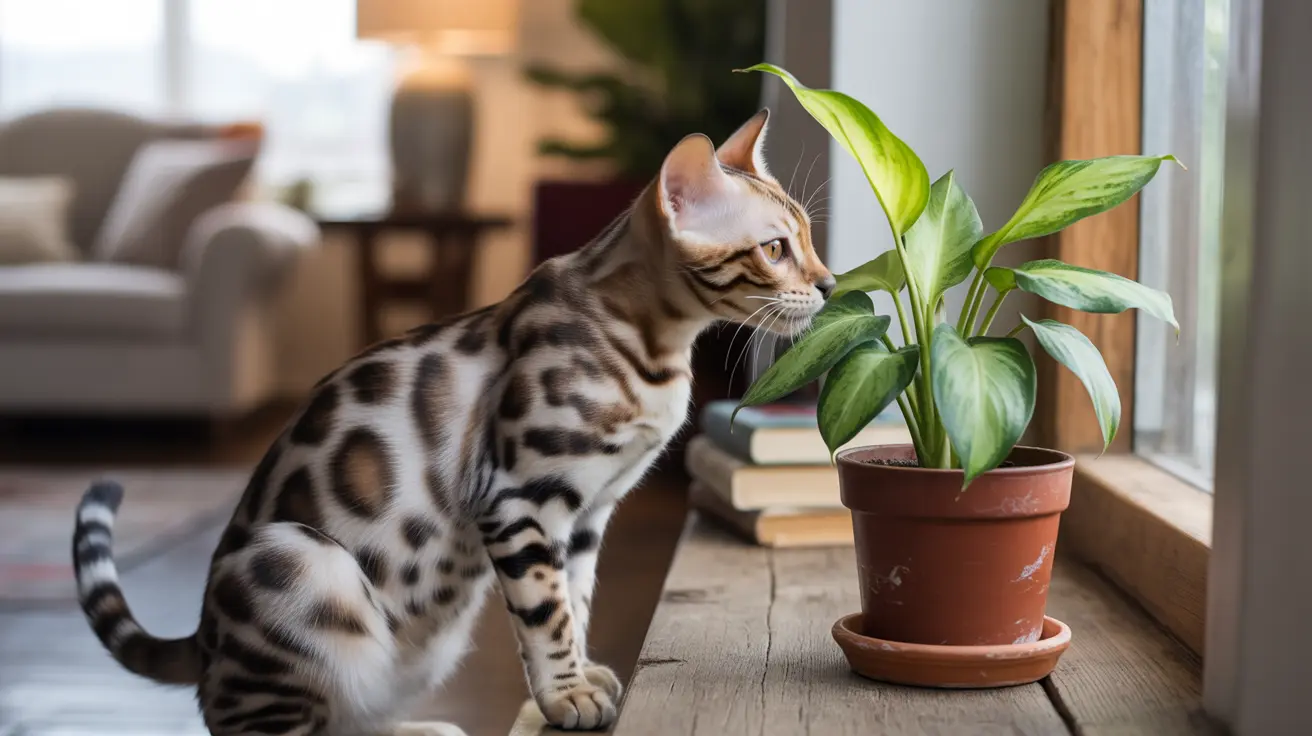If you're a cat parent who loves houseplants, you need to know about Aglaonema, commonly known as Chinese Evergreen. This popular indoor plant, while beautiful and air-purifying, poses significant health risks to our feline friends. Understanding these risks could be crucial for your cat's safety and your peace of mind.
In this comprehensive guide, we'll explore why Aglaonema is toxic to cats, what happens if your cat ingests it, and how to keep your pet safe while still enjoying indoor plants.
Understanding Aglaonema's Toxicity to Cats
Aglaonema contains insoluble calcium oxalate crystals called raphides, which are the primary toxic component. These microscopic, needle-like crystals can cause immediate and severe irritation when your cat chews or bites the plant. The crystals penetrate sensitive oral tissues, leading to intense discomfort and potential health complications.
Recognizing Symptoms of Aglaonema Poisoning
When a cat encounters Aglaonema, symptoms typically appear within minutes to two hours after exposure. Watch for these warning signs:
- Excessive drooling or foaming at the mouth
- Pawing at the face or mouth
- Visible oral pain and swelling
- Vomiting or retching
- Difficulty swallowing
- Loss of appetite
- Lethargy or unusual behavior
Immediate Actions if Your Cat Ingests Aglaonema
If you suspect your cat has eaten any part of an Aglaonema plant, take these steps immediately:
- Remove any remaining plant material from your cat's mouth
- Rinse their mouth gently with cool water if possible
- Offer small amounts of milk or yogurt to help neutralize the crystals
- Contact your veterinarian or pet poison control immediately
- Monitor your cat's breathing and overall condition
Prevention and Safe Alternatives
The best way to protect your cat is to keep Aglaonema out of your home entirely. However, if you must have the plant, consider these safety measures:
- Place plants in rooms your cat cannot access
- Use hanging planters well out of reach
- Create physical barriers around plants
- Consider pet-safe alternatives like:
- Spider Plants
- Boston Ferns
- African Violets
- Parlor Palms
When to Seek Emergency Care
While most cases of Aglaonema toxicity are not fatal, some situations require immediate veterinary attention. Seek emergency care if your cat shows:
- Severe swelling of the throat
- Difficulty breathing
- Persistent vomiting
- Signs of extreme distress
- Inability to swallow
Frequently Asked Questions
What are the signs that my cat has ingested Aglaonema and is experiencing toxicity?
The most common signs include excessive drooling, oral pain and swelling, pawing at the mouth, vomiting, and difficulty swallowing. These symptoms typically appear within minutes to hours after exposure.
How should I treat my cat if it eats or chews on an Aglaonema plant at home?
First, remove any plant material from their mouth and gently rinse with water. Offer small amounts of milk or yogurt to help neutralize the crystals. Contact your veterinarian immediately for professional guidance.
Are all varieties of Aglaonema toxic to cats, including popular types like Pink Dalmatian?
Yes, all varieties of Aglaonema contain calcium oxalate crystals and are toxic to cats. The level of toxicity remains consistent across different varieties and cultivars.
Can swallowing or chewing Aglaonema cause serious breathing or swallowing problems in cats?
Yes, severe swelling of the throat and mouth tissues can lead to breathing difficulties and trouble swallowing. While rare, these complications require immediate veterinary attention.
What are safe houseplant alternatives for cat owners who want to avoid Aglaonema toxicity?
Several pet-safe alternatives include Spider Plants, Boston Ferns, African Violets, and Parlor Palms. Always verify plant safety through the ASPCA's toxic plant database before bringing new plants home.
Remember, your cat's safety should always come first. If you're unsure about a plant's toxicity, err on the side of caution and choose verified pet-safe alternatives. Keep the ASPCA Animal Poison Control Center number (888-426-4435) handy for emergencies, and always monitor your cat's behavior around houseplants.






